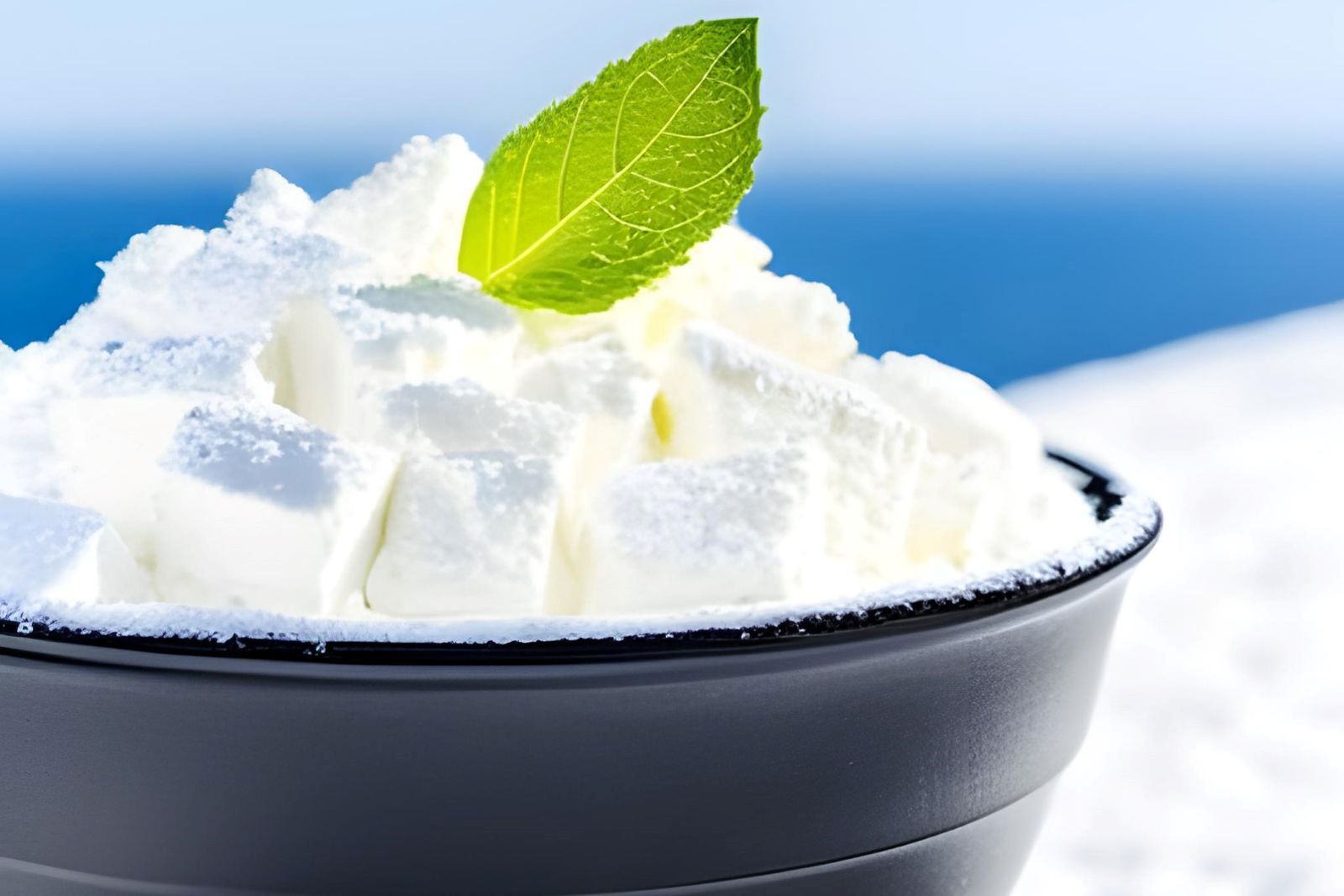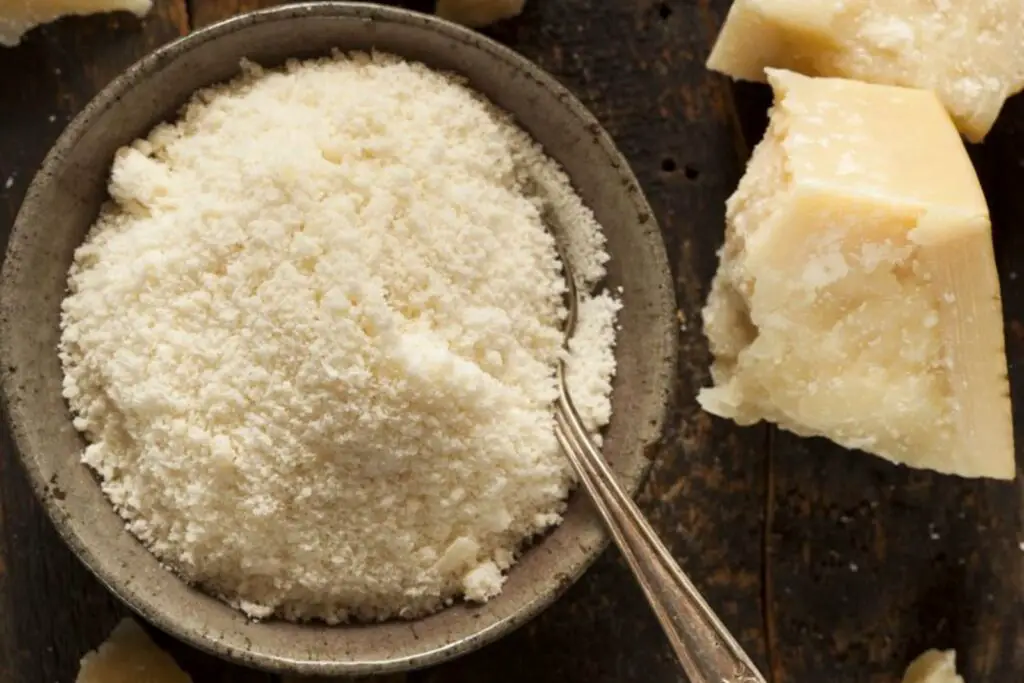
Feta cheese is a delicious and versatile cheese with a crumbly texture and tangy flavor that adds a delightful touch to various dishes. Whether you have an excess amount of feta cheese or want to stock up for later use, freezing it is an excellent option to prolong its shelf life and maintain its quality. Freezing feta cheese allows you to have a readily available supply of this Mediterranean favorite, ensuring that you can enjoy its unique taste in salads, pastas, or as a topping for various recipes. By following the proper steps to freeze feta cheese, you can preserve its creamy texture and distinct flavor, allowing you to incorporate it into your culinary creations whenever the craving strikes.
Here’s how you can freeze it:
Step 1: Remove the feta cheese from its original packaging.
To remove the feta cheese from its original packaging, gently pry off the lid or unwrap the plastic to reveal the cheese. It is important to handle the cheese carefully to avoid breaking it apart.
Next, place the cheese on a clean, dry surface and use a paper towel or clean cloth to pat it dry and remove any excess brine. Feta cheese has a high salt content and removing the excess brine can help to reduce its saltiness. However, it is important to be careful not to dry out the cheese too much as it may become crumbly and lose its flavor.
If the cheese is very wet, it can also be placed on a wire rack to allow any remaining brine to drip off for a few minutes. Once the excess brine has been removed, the feta cheese can be cut or crumbled into smaller pieces as desired for freezing, cooking, or serving.
Step 2: Cut the feta cheese into small pieces.
After removing any excess brine from the feta cheese, the cheese should be cut or crumbled into smaller pieces. This step is important to ensure that the cheese can be frozen or used in recipes effectively.
To cut the feta cheese into small pieces, use a sharp knife to carefully slice the cheese into cubes or rectangles. It is important to use a gentle sawing motion to avoid crushing the cheese. For best results, try to make the pieces as uniform in size as possible, as this will ensure that they freeze and thaw evenly.
Alternatively, the feta cheese can be crumbled into smaller chunks using your hands. To do this, gently break the cheese apart into small pieces with your fingers. Again, it is important to handle the cheese gently to avoid crushing it. Crumbled feta cheese can be used in a variety of recipes, such as salads, dips, and omelets.
Step 3: Place the feta cheese pieces in a freezer-safe container.
The best way to do this is to place the cheese pieces in a freezer-safe container or a resealable freezer bag.
Freezer-safe containers can be made of plastic, glass, or other materials that are designed to withstand freezing temperatures without cracking or breaking. A resealable freezer bag is another convenient option, as it allows you to remove as much air as possible before sealing the bag, which helps to prevent freezer burn.
When selecting a container or bag, make sure it is the right size to accommodate the amount of feta cheese you are freezing. Avoid overfilling the container or bag, as this can cause the cheese to become crushed or damaged.
Step 4: Squeeze out as much air as possible before sealing it.
If you are using a freezer bag to store your feta cheese, it is important to remove as much air as possible from the bag before sealing it. This is because air can cause freezer burn, which can affect the texture and flavor of the cheese.
To squeeze out air from a freezer bag, start by filling the bag with the feta cheese pieces. Next, press down on the bag to release any air that may be trapped inside. Then, use your hands to carefully push the cheese toward the bottom of the bag, creating a flat, even layer.
Once the cheese is evenly distributed, seal the bag, leaving a small opening near one of the corners. Carefully press down on the bag, starting at the top and moving towards the opening, to force out any remaining air. Finally, quickly seal the bag shut as you continue to apply pressure, making sure there is no air trapped inside.
If you have a vacuum sealer, you can also use this to remove air from the bag. Simply place the feta cheese pieces in the bag, seal one end, and then use the vacuum sealer to remove the air before sealing the other end.
Step 5: Place the container or bag in the freezer.
This step is critical to ensure that the cheese is preserved properly and remains safe to eat.
When placing the container or bag in the freezer, it is important to choose a location that is not too crowded, as this can cause the cheese to become crushed or damaged. Additionally, try to store the cheese in a location where it will remain frozen, such as the back of the freezer or in a freezer drawer.
If you are freezing the cheese in a container, be sure to place it on a flat surface in the freezer. This will help prevent the container from tipping over and spilling its contents. If you are freezing the cheese in a bag, it is helpful to place it on a flat surface, such as a baking sheet, before putting it in the freezer. This will help the cheese freeze evenly and prevent it from sticking together.
Other related questions
How long can I freeze feta cheese?
Feta cheese can be frozen for up to 6 months without significantly affecting its quality. However, it’s best to consume the cheese as soon as possible after thawing, as the texture may change and it may not taste as fresh as it did before being frozen. It’s recommended to label the packaging with the freeze date for easy reference.
How do you defrost frozen feta cheese?
To defrost frozen feta cheese, transfer it from the freezer to the refrigerator and let it thaw slowly for several hours or overnight. Avoid defrosting feta cheese at room temperature or in the microwave, as this can cause it to become mushy. Once thawed, use the cheese as soon as possible for the best texture and flavor.
How long can I keep thawed feta cheese in the refrigerator?
Once thawed, feta cheese should be consumed within 3-4 days if stored properly in the refrigerator. To keep it fresh for longer, store it in an airtight container or wrapped tightly with plastic wrap. It’s also best to avoid keeping it in the warmest parts of the refrigerator, such as the door, to maintain its quality.
Can I refreeze feta cheese that has been previously frozen?
It’s not recommended to refreeze feta cheese that has been previously frozen, as the texture and flavor may be significantly affected. Refreezing can also increase the risk of foodborne illness. Once feta cheese has been thawed, it should be consumed within a few days, or alternatively, cooked into a dish that can be refrozen.
Can I freeze any type of feta cheese?
In general, most types of feta cheese can be frozen, including crumbled, sliced, and blocks. However, it’s important to note that the texture and flavor may change slightly after being frozen. It’s best to choose a high-quality feta cheese that you enjoy eating to ensure the best results after freezing.
How do I know if my frozen feta cheese has gone bad?
There are a few signs that your frozen feta cheese may have gone bad. These include a sour or unpleasant odor, a slimy or discolored appearance, and a noticeable change in taste or texture. If you observe any of these signs, it is best to discard the cheese to avoid the risk of foodborne illness. Always remember to properly store and label your frozen feta cheese to help prevent spoilage.
Can I use my frozen feta cheese with the fresh ones?
Yes, you can use frozen feta cheese alongside fresh feta cheese in many dishes, including salads, pasta dishes, and sandwiches. However, it’s important to keep in mind that the texture and flavor of frozen feta cheese may be slightly different from fresh feta cheese, so it’s best to use it in dishes where the difference is less noticeable or where it is melted or cooked into the dish.
Can I freeze crumbled feta cheese or should I freeze it in a block?
Both crumbled and block feta cheese can be frozen, but it’s generally easier to freeze crumbled feta cheese since it’s already portioned and ready to use. Freezing crumbled feta cheese also allows for quicker thawing and easier incorporation into dishes. However, if you prefer to freeze a block of feta cheese, it’s best to wrap it tightly with plastic wrap to prevent freezer burn.
Will the texture of frozen feta cheese be affected?
Yes, the texture of frozen feta cheese may change slightly after being thawed. It may become slightly crumbly or softer, but this shouldn’t affect its taste or usability in most dishes. To minimize texture changes, it’s best to freeze feta cheese in airtight packaging and thaw it slowly in the refrigerator.
Can I use frozen feta cheese in salads or other dishes?
Yes, you can use frozen feta cheese in salads or other dishes once it’s been properly thawed. However, keep in mind that the texture may be slightly different than fresh feta cheese, so it may not be ideal for dishes where the texture is important. Frozen feta cheese is best used in cooked dishes, such as baked pasta, soups, or stews.
How does freezing affect the flavor of feta cheese?
Freezing can affect the flavor of feta cheese, as it may become slightly less tangy or salty after being frozen and thawed. However, the change in flavor is usually minimal and may not be noticeable in most dishes. Choosing high-quality feta cheese and proper packaging can help maintain the flavor as much as possible.
Can I freeze feta cheese in brine?
It’s not recommended to freeze feta cheese in brine, as the brine may expand and crack the cheese during freezing, affecting its texture and flavor. Instead, it’s best to remove the cheese from the brine and dry it thoroughly before freezing. If desired, you can make a new brine solution to store the cheese in after it has been thawed.
Can I freeze feta cheese for use in baking?
Yes, feta cheese can be frozen for use in baking, such as in baked pasta dishes, quiches, or pies. Freezing can actually make it easier to crumble or grate the cheese, which can be helpful for certain recipes. However, it’s important to thaw the cheese properly before using it in baking to ensure even distribution and proper melting.
Will the freezing process kill any harmful bacteria in the cheese?
No, freezing will not kill any harmful bacteria present in feta cheese. While freezing can slow down the growth of bacteria, it doesn’t completely eliminate it. It’s important to follow safe food handling practices when handling and storing feta cheese, including washing your hands and surfaces thoroughly, keeping the cheese refrigerated or frozen, and discarding any cheese that appears moldy or has an off smell.
Can I freeze marinated feta cheese?
Yes, you can freeze marinated feta cheese, but it’s important to remove any excess marinade before freezing. The marinade may become thicker or more concentrated after freezing, affecting the texture and flavor of the cheese. It’s best to store marinated feta cheese in an airtight container or wrap it tightly with plastic wrap to prevent freezer burn.








